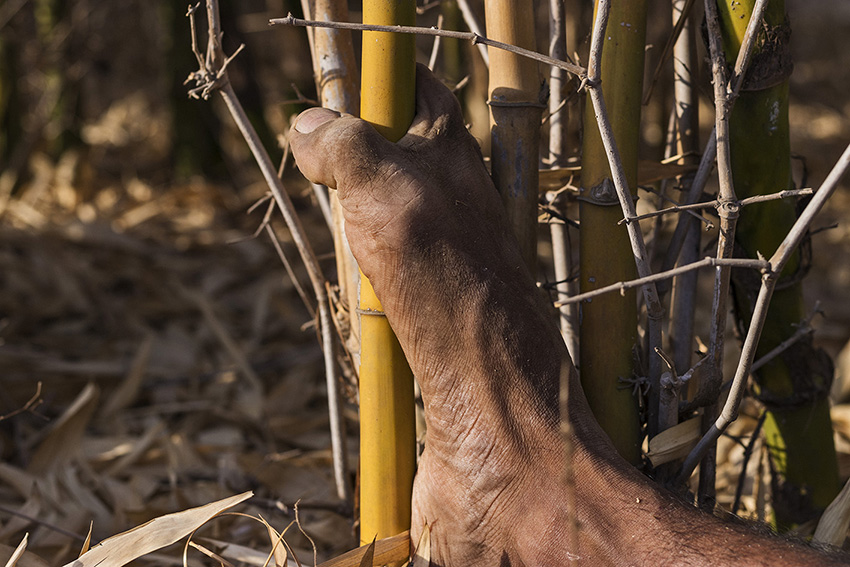2018 | Digital print on archival paper | Print (width x height): 24 x 16 in. / 60.9 x 40.6 cm. | Archival Paper: Hahnemühle Photo Rag, 308 gsm, acid-free | Printer: Canon Pro 560 with Lucia Pigment Inks

Camouflage, is an ongoing series of multi-disciplinary works that explores the armed forces’ use of camouflage. This technique of concealment is adapted across varied geographies and has been crucial in past wars to current conflicts. The concept of camouflage originates from biological studies describing a range of strategies used by organisms to dissimulate their presence in the environment.
Camouflage #2, takes its inspiration from the artwork, ‘Sikhs charging in a wood of fir trees furrowed by English artillery (May 19) Southwest of Ypres’ (c. 1915-1919) by the French-Italian graphic artist Alberto Fabio Lorenzi. This fan-shaped tableau in a Japanese style, is a woodcut on paper. It falsely depicts a group of Sikhs with rifles in hand and daggers in mouth, advancing between tall tree trunks. Dominiek Dendooven, scientific researcher and curator at the In Flanders Fields Museum in Ypres says, “During the First World War Lorenzi created a number of fan-shaped battle scenes in Japanese style. He situated this tableau near Hill 60 in May 1915. Even though British Indian troops were indeed present near Ypres in that period, neither the place nor the landscape is accurate”.
An undivided India contributed with many combatants and non-combatants to the First World War in Europe and worldwide. A war on foreign soil also meant that the Indian armies had to adapt, and at times cover up their confrontations with cultural shocks, diverse food habits, language barriers, extreme climatic conditions, and so on. The colonial ‘sepoys’ constantly had to prove their allegiance to the empire by zealously fighting on the front, while masking their mental longing for their families and homes.
From hiding to disguising, the photographs use the mimesis / mimicry technique of camouflaging to effectively conceal, but sometimes failing to visibly reveal. Following these trepidations of divulging and concealing, the images also attempt to explore, if it was possible for the ‘sepoys’ to not only camouflage their bodies and location, but also their intentions, opinions, fears, and so on.
Camouflage #1, Camouflage #2, Camouflage #3, Camouflage #4, was developed during Baptist Coelho’s digital workshop, supported by and at Uttarayan Art Foundation, Vadodara, 2018.